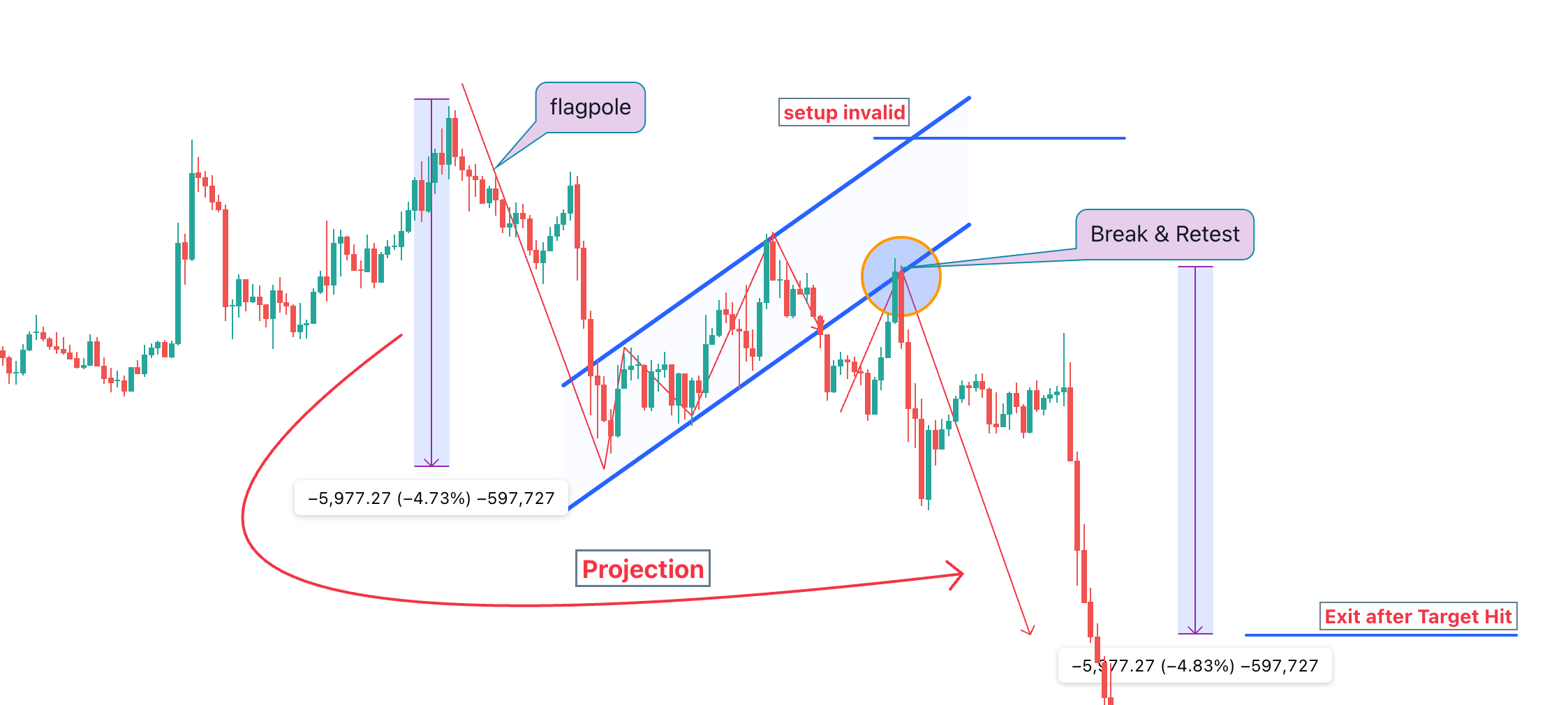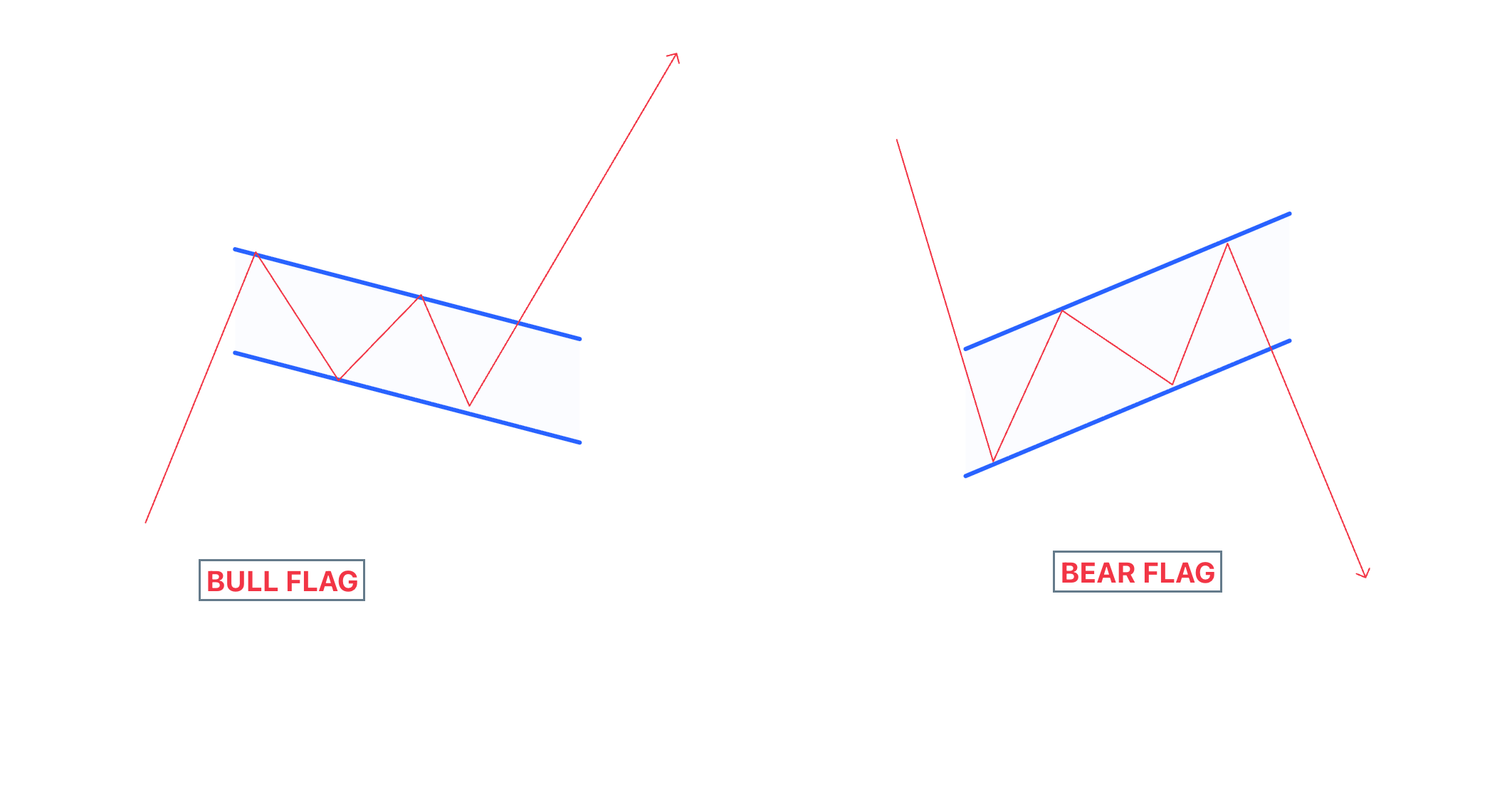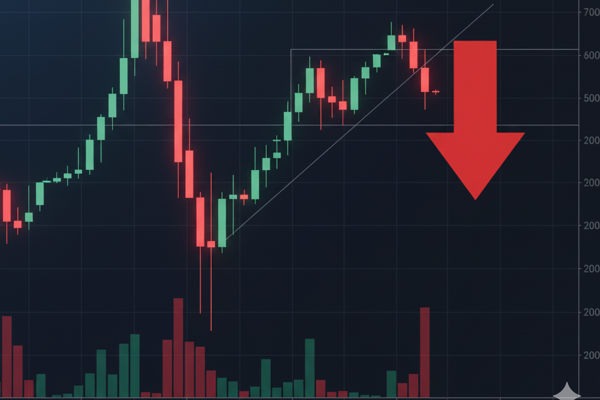The bear flag pattern is one of the most reliable bearish continuation patterns. It signals that a strong downtrend is likely to continue after a brief pause. This formation is widely used across forex, crypto, and stock markets, giving traders a versatile tool to spot opportunities in falling markets.
What is a Bear Flag Pattern?
A bear flag forms when a market experiences a sharp decline, called the flagpole, followed by a short-lived consolidation period, known as the flag. The flag typically slopes upward or sideways, retracing less than half of the initial drop.
Once this pause ends, price usually breaks downward through the flag’s support, resuming the bearish trend.

The main objective of trading this pattern is to catch the next leg down in the market with clearly defined entry, stop loss, and profit levels.
How a Bear Flag Forms
The formation of a bear flag follows three phases:
- Strong Sell-Off (Flagpole): A steep decline in price, usually with high volume, sets the tone.
- Consolidation (Flag): Price retraces slightly as sellers take profits. The flag may appear as:
- A rising rectangle (slightly upward sloping).
- A horizontal rectangle.
- A small triangle (bear pennant).
- Breakdown: Price breaks below the lower trendline of the flag, often with a surge in volume, confirming continuation of the downtrend.
Types of Bear Flags
Bear flags can vary in shape, but they all reflect the same underlying dynamic: a pause before another sell-off.
- Standard Bear Flag – After a sharp fall, price consolidates in a range (sideways channel) before breaking down further.
- Ascending Bear Flag – After a sharp fall, price consolidates in an ascending (slightly upward sloping) channel, showing weaker retracement and setting up for continuation lower.
- Bear Pennant – Consolidation takes the form of a symmetrical triangle, narrowing before the breakdown.

How to Identify a Bear Flag
Key elements to confirm a bear flag include:
- A clear downtrend already in place.
- A sharp, energetic decline forming the flagpole.
- A consolidation that retraces less than 50% of the pole.
- A flag bounded by parallel trendlines (upward, downward, or sideways).
- Volume decreasing during the consolidation and surging on breakdown.
- A decisive close below the flag’s support to confirm the pattern.
How to Trade the Bear Flag
Trading a bear flag is straightforward but requires patience:
- Entry: Open a short position when price breaks and closes below the flag’s lower trendline.
- Stop Loss: Place it just above the upper boundary of the flag or recent highs inside the consolidation.
- Profit Target: Measure the length of the flagpole and project that distance downward from the breakout. Many traders also look for at least a 2:1 reward-to-risk ratio.

Advanced Strategies
Some traders enhance bear flag setups with additional tools:
- Fibonacci Retracements: Measure the pullback within the flag. Reversals near the 38.2%, 50%, or 61.8% levels often provide entries.
- Support Breakouts: A flag forming at a key support area can strengthen the bearish signal if that level breaks.
- Moving Averages: The 20-period MA often acts as dynamic resistance during the flag phase. If price remains below it, the downtrend is more likely intact.
Risks and Failed Bear Flags
Bear flags are reliable but not infallible. Common risks include:
- False Breakouts: Price briefly dips below support but reverses upward.
- Extended Flags: Long consolidations reduce momentum and increase failure chances.
- Low-Volume Breakdowns: Without strong volume, a breakout may not sustain.
A failed bear flag occurs when price breaks above the flag’s resistance instead of down. This often signals a shift in market sentiment and can trigger a bullish reversal. Recognizing failed patterns quickly helps traders limit losses or adapt to new opportunities.
Bear Flag vs Bull Flag
The bear flag has a bullish counterpart: the bull flag. Both share the same structure of a sharp move (pole) followed by a consolidation (flag). The difference is direction: bull flags signal the continuation of an uptrend, while bear flags point to further declines.

Is the Bear Flag Pattern Your Key to Profitable Short Trades?
The bear flag pattern is a powerful continuation setup that allows traders to anticipate and profit from extended downtrends. By identifying the steep flagpole, recognizing the consolidation, and confirming the breakdown with volume, traders can build reliable short strategies. Combining this pattern with risk management, moving averages, or Fibonacci retracements makes it even more effective.
Still, no pattern is flawless. Traders should always watch for failed signals and protect capital with disciplined stop-loss placement. Used wisely, the bear flag is a cornerstone of technical trading strategies across forex, stocks, and crypto markets.


